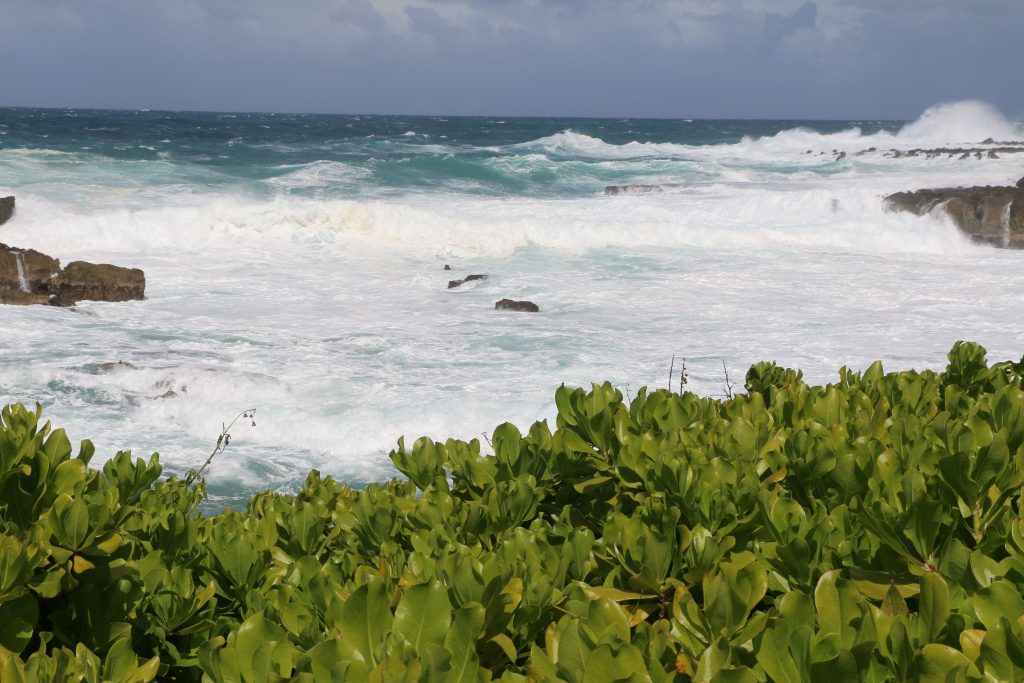10/11/21-COASTAL EROSION – NO EASY, INEXPENSIVE, OR ONE-SIZE-FITS-ALL SOLUTIONS
Posted on Oct 11, 2021 in Main, News Releases, OCCL, slider, sliderNews Release
| DAVID Y. IGE GOVERNOR |
SUZANNE D. CASE
CHAIRPERSON |
For Immediate News Release: October 11, 2021
COASTAL EROSION – NO EASY, INEXPENSIVE, OR ONE-SIZE-FITS-ALL SOLUTIONS
(HONOLULU) – The options available to land managers and owners of coastal properties facing serious beach erosion are limited, expensive, and unlikely to provide permanent fixes. That’s one of the conclusions of a presentation to the Board of Land and Natural Resources last Friday.
Shellie Habel, a coastal geologist with the University of Hawai‘i Sea Grant Program, is assigned to the DLNR Office of Conservation and Coastal Lands (OCCL). Her update to land board members pointed to the difficulties involved in combating beach erosion.
“The challenges are mounting to the degree that DLNR will need to clarify its goals and focus its effort accordingly to effectively steward coastal resources,” Habel said.
She detailed the current state of beach erosion across Hawai‘i, citing government and academic reports that indicate 70% of the beaches on Maui, Kaua‘i, and O‘ahu are chronically eroding. By 2012, over 13-miles of beach had completely disappeared due to erosion and seawall construction.
The causes vary from beach to beach and include long-term changes in sea level, mining of sand, seawalls, landscaping, and natural and seasonal changes in sand movement. Habel reported that sea level rise and seasonal erosion are beyond anyone’s control and said one-foot of sea level rise can mean the shoreline moves inland by 50-to-100-feet.
Beach erosion is a global problem and can be attended to in three basic ways; none of which are easy or inexpensive and have trade-offs.
· Shoreline hardening – a historical response using hard structures. Has led to widespread beach loss and impacts to neighboring properties that are unarmored.
· Shoreline retreat – Shifting development inland. Controversial globally and no effective examples to date.
· Coastal restoration projects – Short to mid-term maintenance options that need periodic work to maintain benefits. Require careful design and implementation to minimize potential environmental impacts.
Restoration projects and shoreline hardening have been part of OCCL’s response to manage erosion impacts. Both have downsides. Habel noted mounting concern from people about upcoming restoration projects and shoreline hardening is permitted when its necessary to alleviate threats to public health, safety, and welfare.
The OCCL is overwhelmed with more than 70 non-compliant emergency permits for temporary hardening projects, many on O‘ahu’s north shore. Many were not properly engineered, making them potentially dangerous, as they cause the deposition of debris like splintered two-by-fours and nails in the sand.
Habel concluded, “We’re involved in a range of efforts to protect our beaches while also assisting with the needs of backshore development. This is becoming more and more difficult as our coastal hazards intensify, requiring us to use all available tools to give coastal management our best shot.”
# # #
Media Contact:
Dan Dennison
Senior Communications Manager
(808) 587-0396
[email protected]
